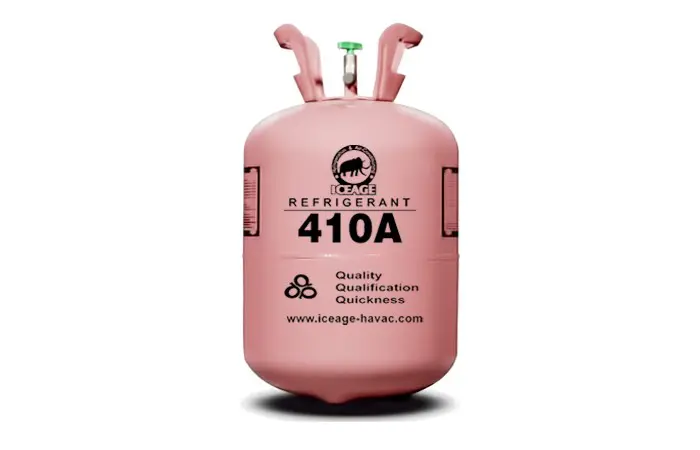Comparison of R22, R410A, R32 and R290

R22
The chemical composition of R22 is chlorodifluoromethane (CHClF2), which is non-flammable, non-explosive, has very low toxicity, and its safety grade is A1. The ozone depletion potential (ODP) of R22 is >0. Therefore, it is not suitable for long-term use and will be completely phased out.
R410A
R410A is composed of R32 and R125 in a 50% mass fraction ratio each. Among them, R32 (difluoromethane CH2F2, A2L), R125 (pentafluoroethane CF3CHF2, A1), and the safety grade of A410A is A1. It is also a working medium that is non-flammable, non-explosive, and has very low toxicity.
Compared with R22, R410a is a high-pressure refrigerant, which requires higher pressure resistance for equipment and systems. However, it is beneficial to reduce the displacement of the compressor, the diameter of the heat exchange copper tube, and save raw materials; the heat transfer and flow characteristics of R410a are better than R22, which is beneficial to improving the operating efficiency of air conditioners, and the energy-saving effect is obvious. It has been widely used currently.
R32
The chemical composition of R32 is difluoromethane CH2F2, which has very low toxicity and is slightly flammable, and its safety grade is A2L. R32 has the possibility of explosion, and its explosion limit is 14.4% - 29.3%. In domestic air conditioning applications, the problem of low flammability needs to be addressed.
The refrigeration performance of R32 is close to that of R410a. Under the same cooling capacity conditions, the filling amount of R32 is less than that of R410a (about 30% reduction), but the exhaust temperature is higher than that of R410a. The ODP of R32 is 0, and GWP is 675. It belongs to a green and environmentally friendly refrigerant and is an important substitute for R22. Currently, there are a large number of applications.
R290
The chemical composition of R290 is propane (CH3CH2CH3), which has very low toxicity, is flammable, and its safety grade is A3. The explosion limit of R290 is 2.1% - 10.0%, and the explosion point is much lower than that of R32.
The ODP of R290 is 0, and GWP is 20, which has a very small contribution to global warming. It belongs to natural organic matter and can be directly obtained from liquefied petroleum gas and has a low price. R290 has good thermodynamic performance, a large latent heat of vaporization, and a small system filling amount. The exhaust temperature under the same working conditions can be 20°C lower than that of R22, which is beneficial to extending the service life of the compressor. As R290 gradually comes into view, many enterprises have established production lines for R290 air conditioners.
- What to Consider When Replacing R22 with Refrigerant R404A?
- What Are the Differences Between R22 and R404A Cold Storage Systems?
- Introduction to Inspection and Handling Methods for Refrigerant Leak in Cold Storage
- Four Combustible and Explosive Refrigerants: Precautions When in Use!
- Characteristics and Differences among Water System, Air System and Refrigerant System
- How to Judge the Refrigerant Charge Amount?
- How to Properly Extract Ammonia Refrigerant during Refrigeration Parts Repair
- Operating Principle and Standard Installation Steps of Multi - split Systems in Refrigerant Air - conditioning Systems
- Sensor for Refrigerant Leak Detection in Cold Chain Transportation
- Why Should Refrigerant Be Filled in Liquid Form? What Are the Filling Methods?
- What are the Cooling and Heating Pressures of an Air Conditioner? How to Calculate the Optimal Refrigerant Quantity?
- Maintenance Methods for Refrigerant Leak in Air - conditioner Outdoor Unit
- Operations and Precautions for Multi - split Air Conditioners: Blowing Debris, Air Tightness, Vacuum Drying, and Refrigerant Charging
- Multi-split air conditioner: Nitrogen charging for welding, pressure maintaining, vacuuming and refrigerant charging
- What Sensors Are Used for Leak Detection of R1234yf, the New Generation of Environmentally Friendly Refrigerant?
- How to Check Refrigerant Leakage in Air Conditioning System?
- Scheme for the Use and Safety of Ammonia Refrigerants
- Precautions for Replacing Refrigeration Compressor Refrigerant Oil
